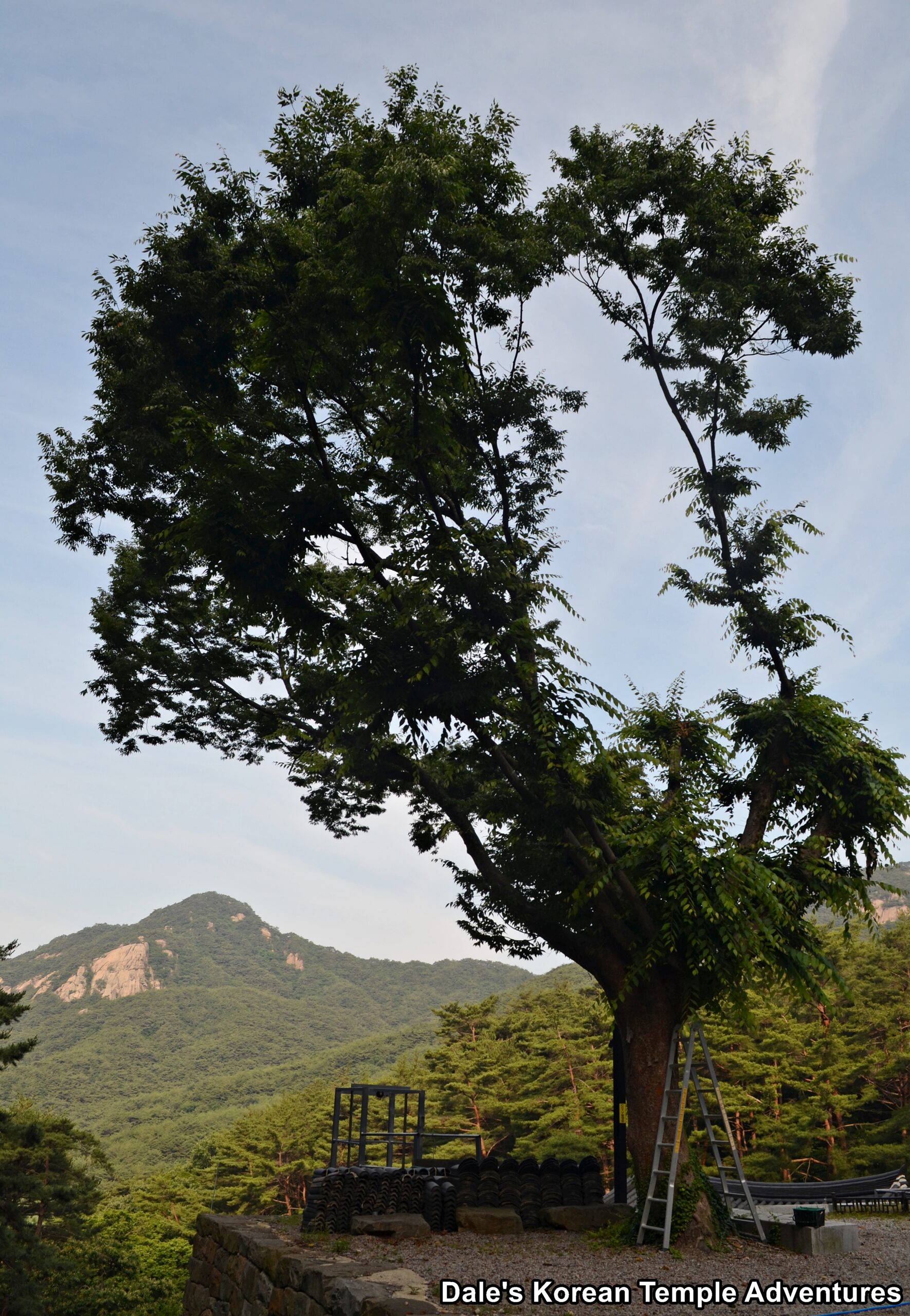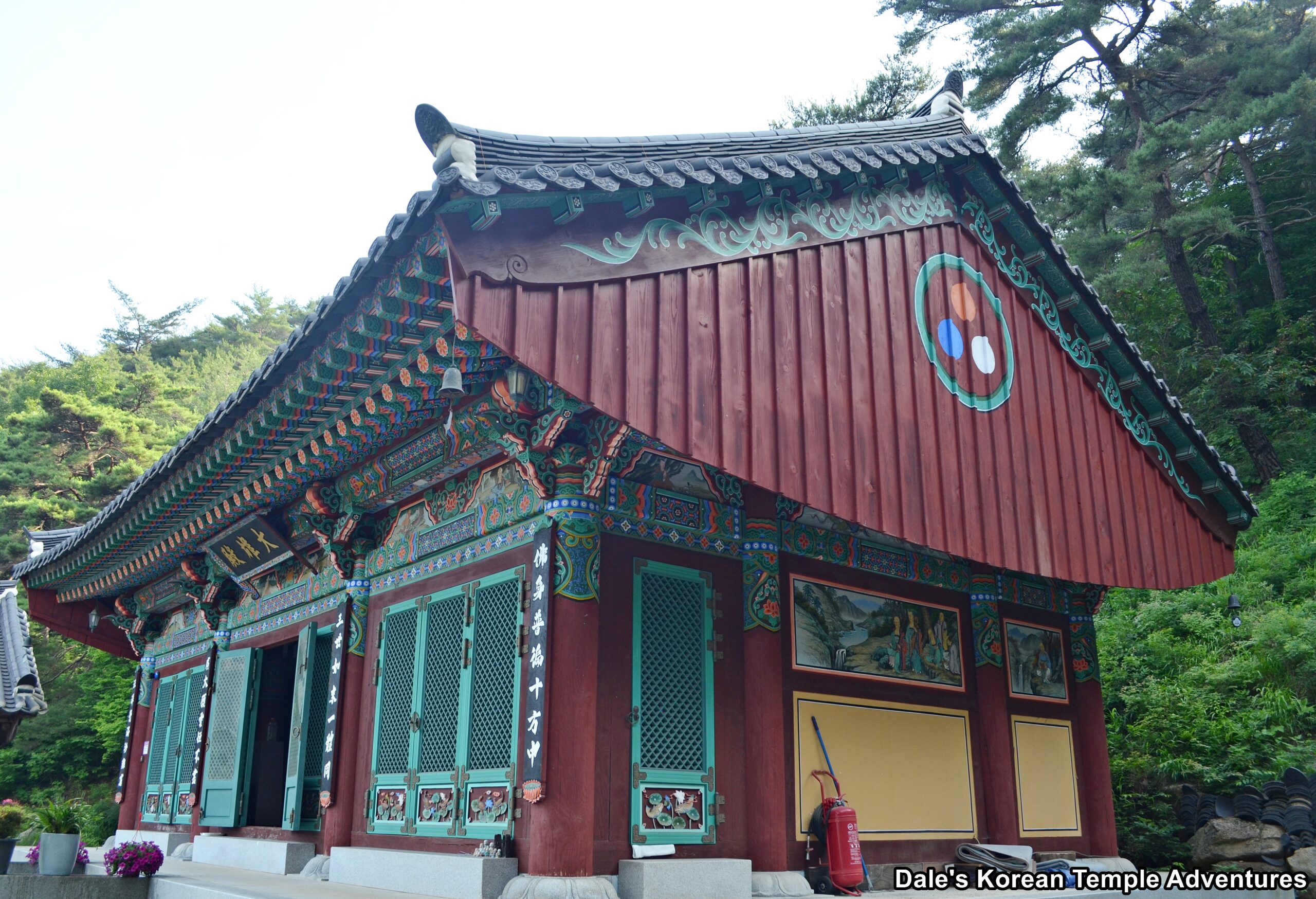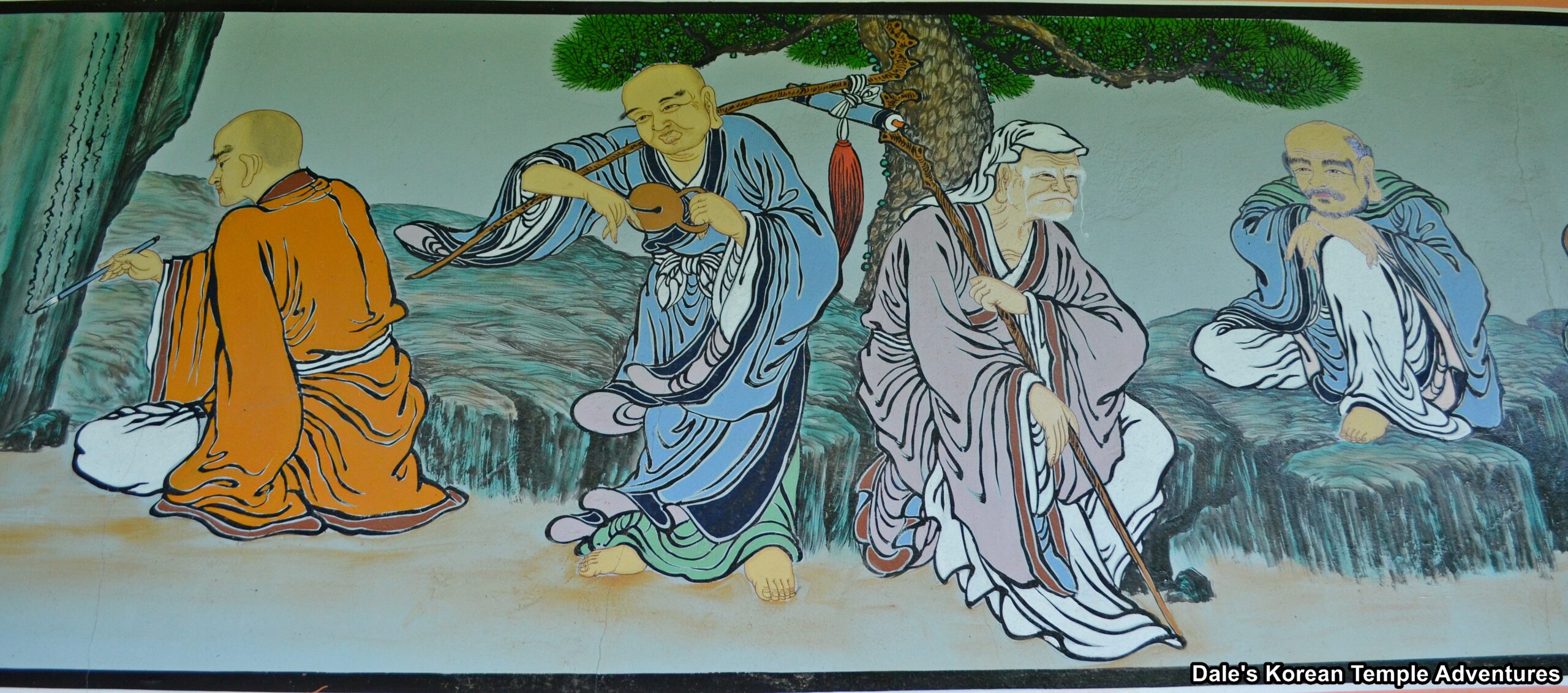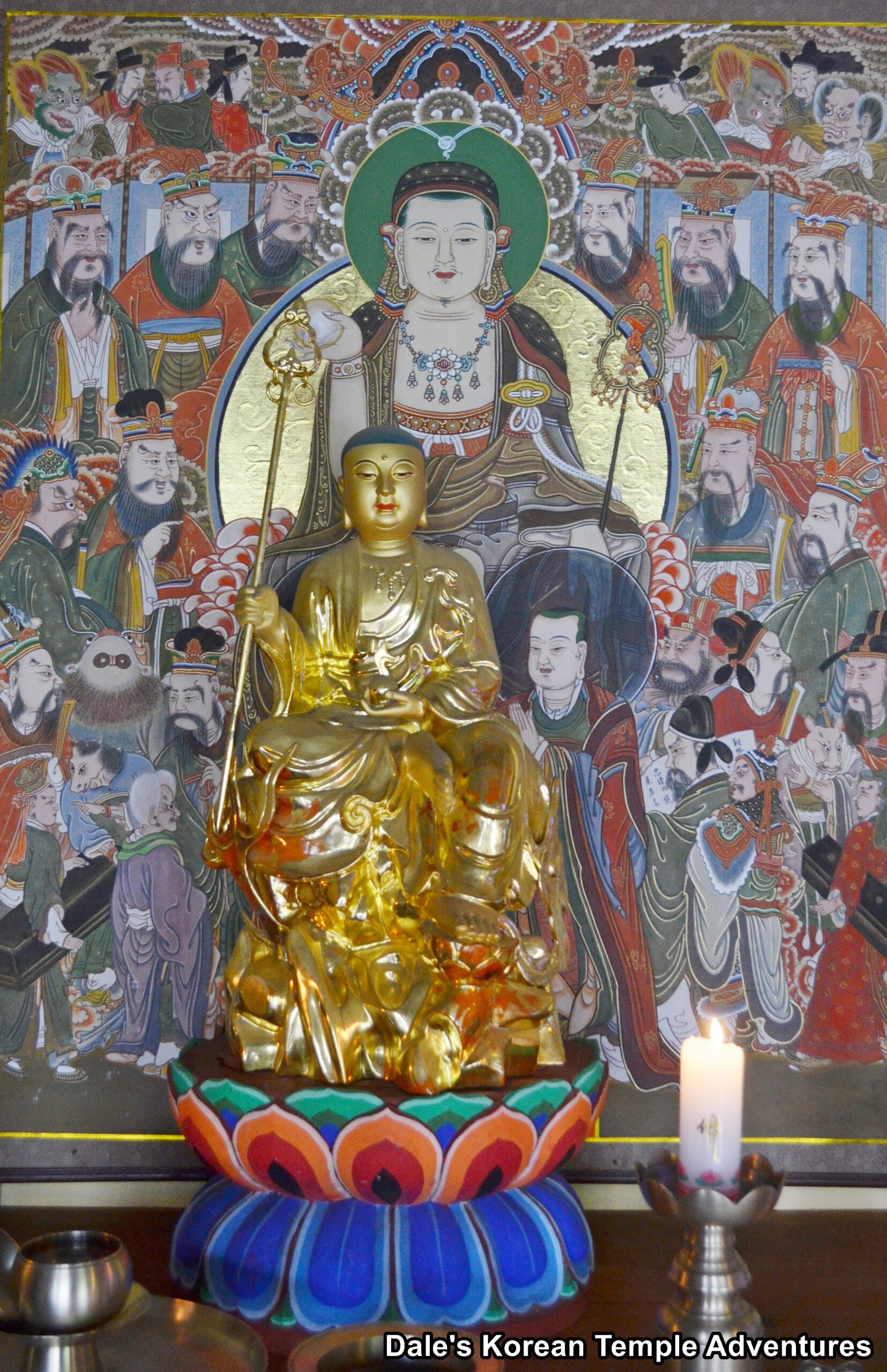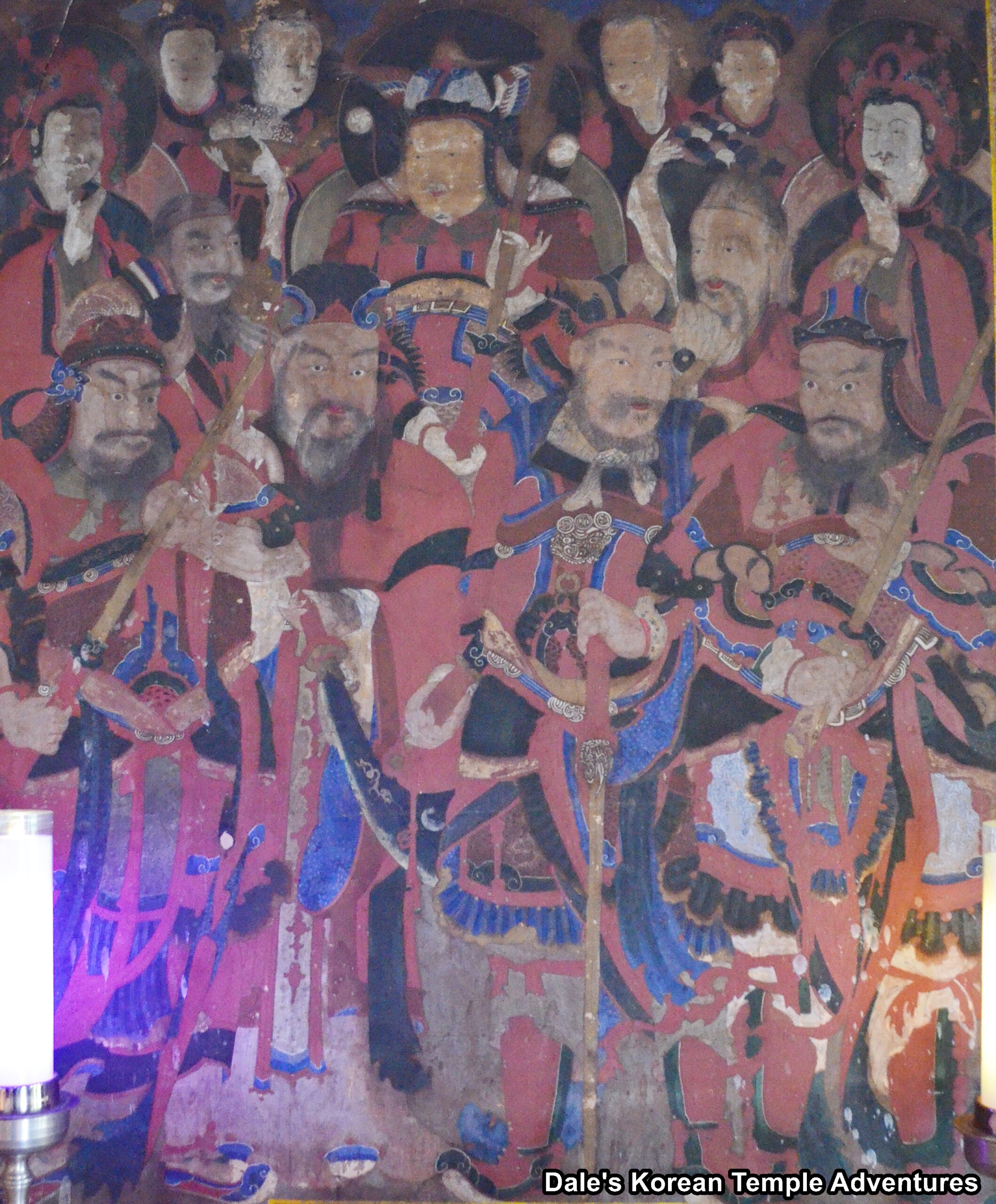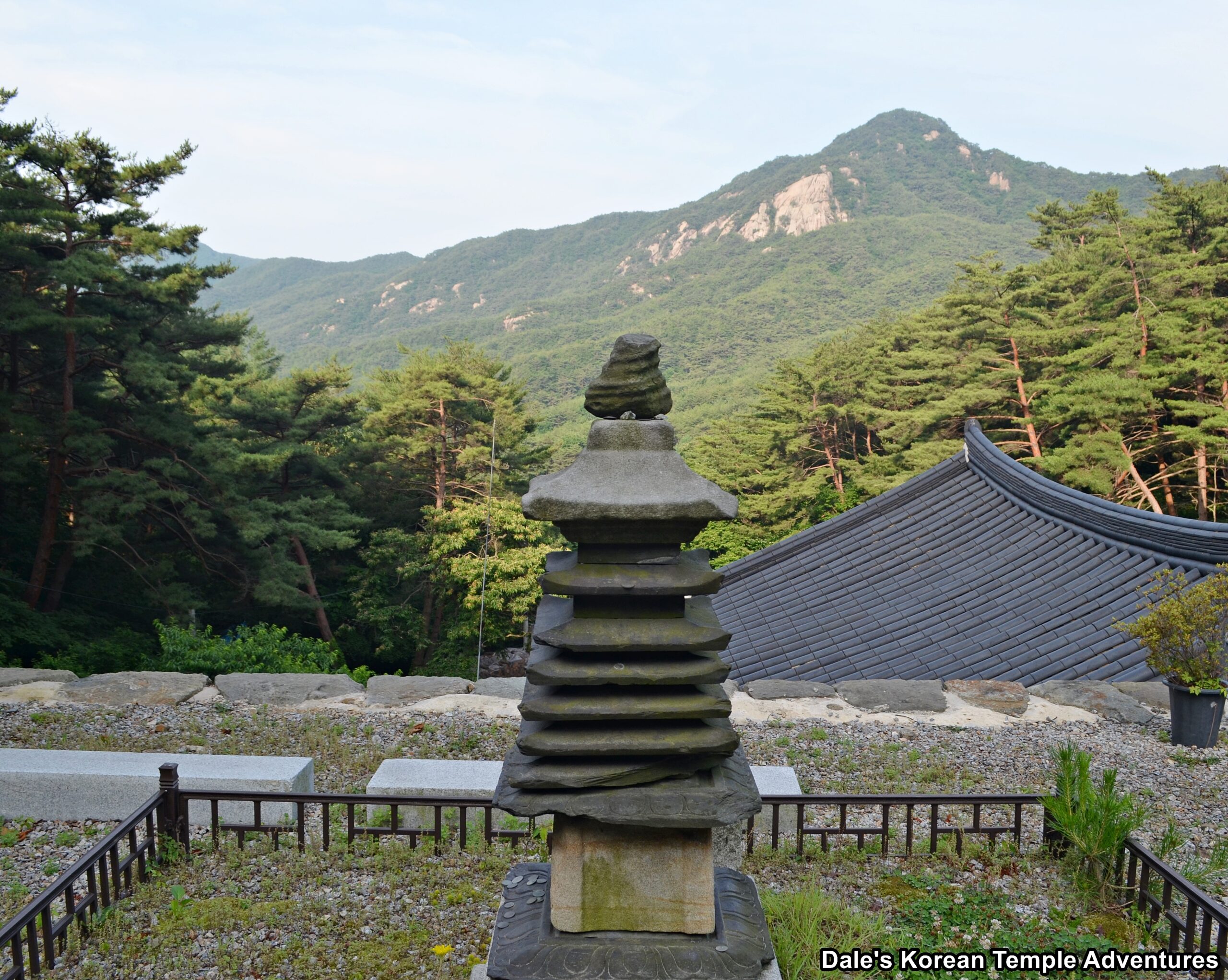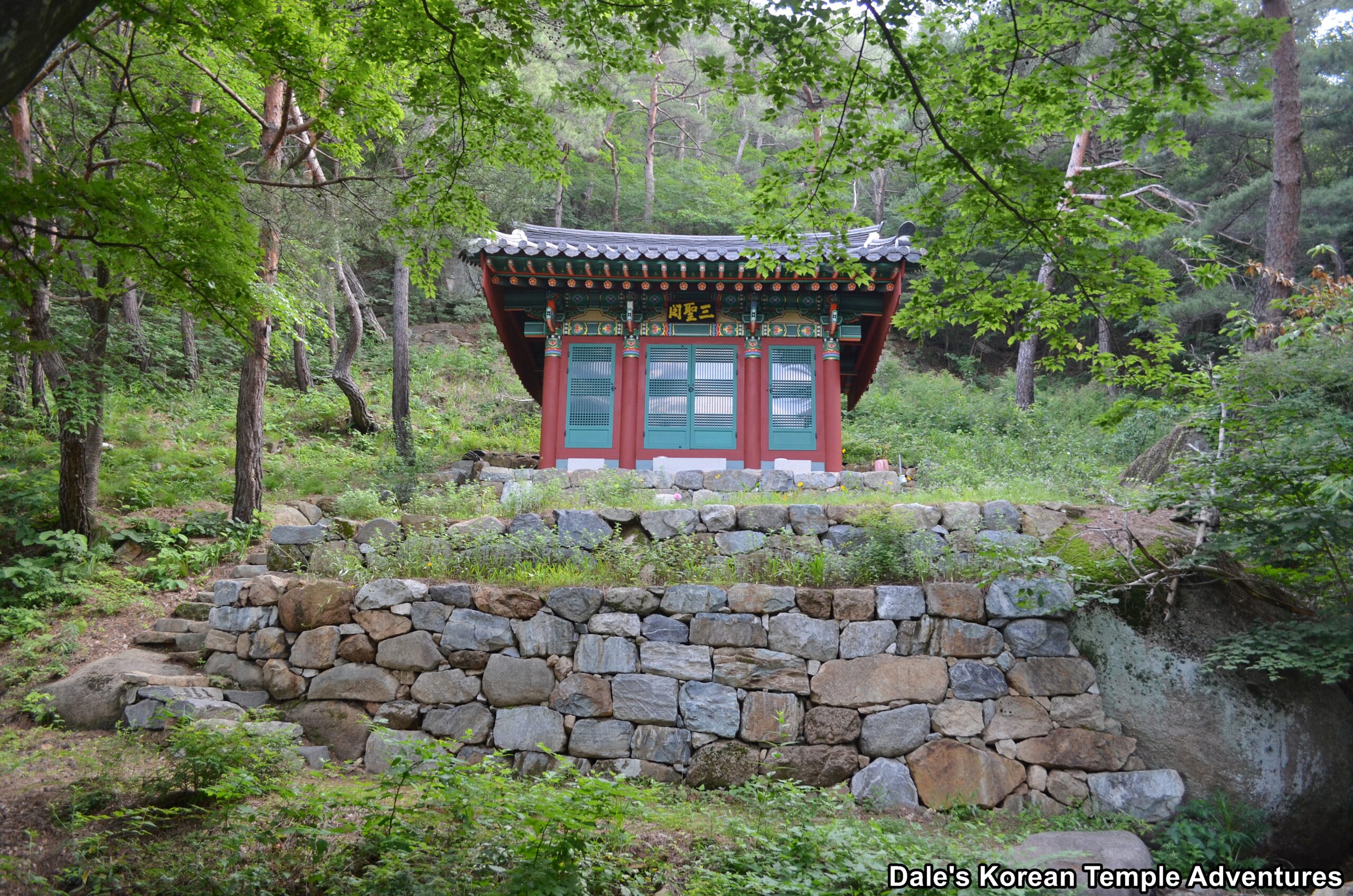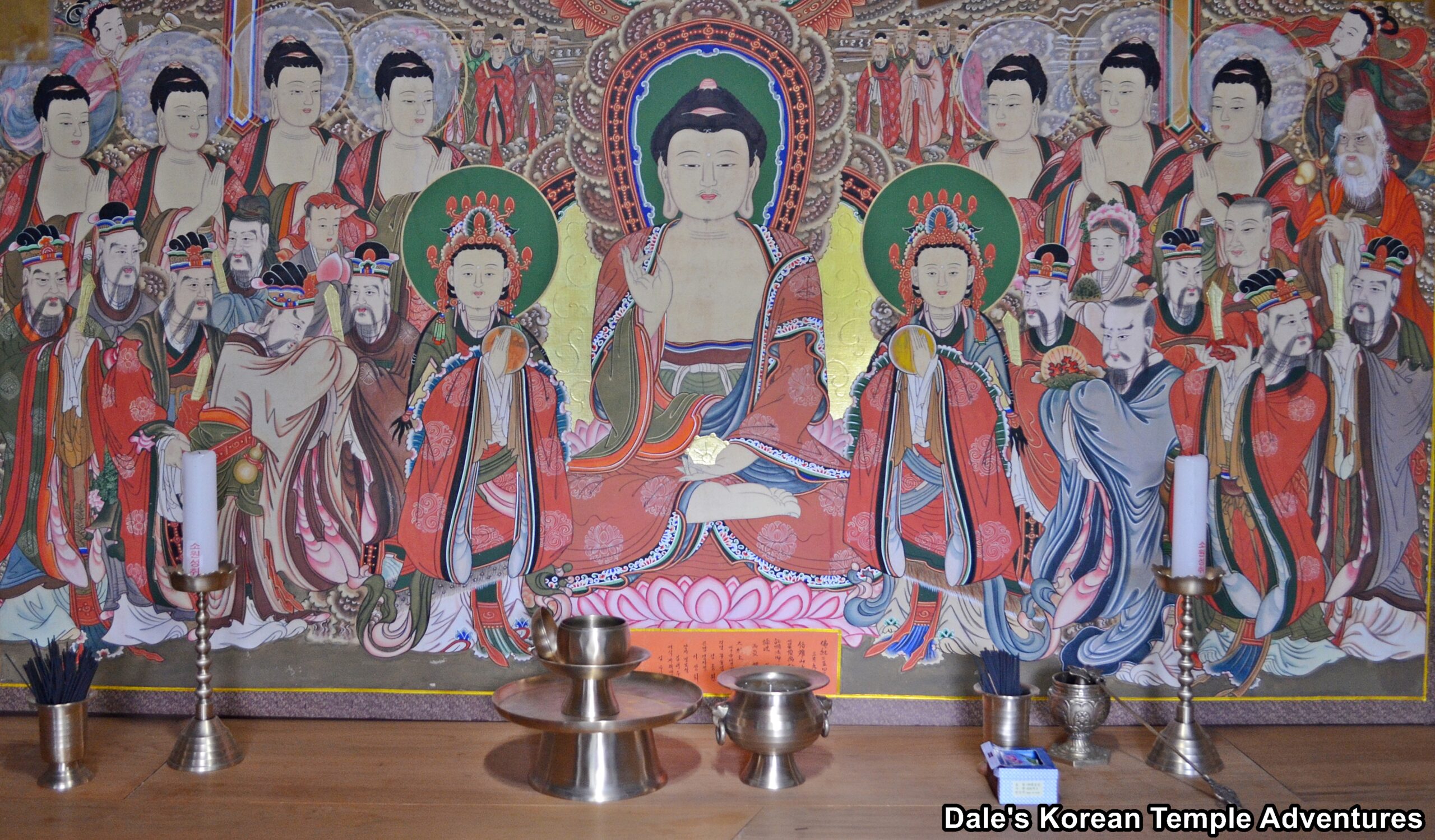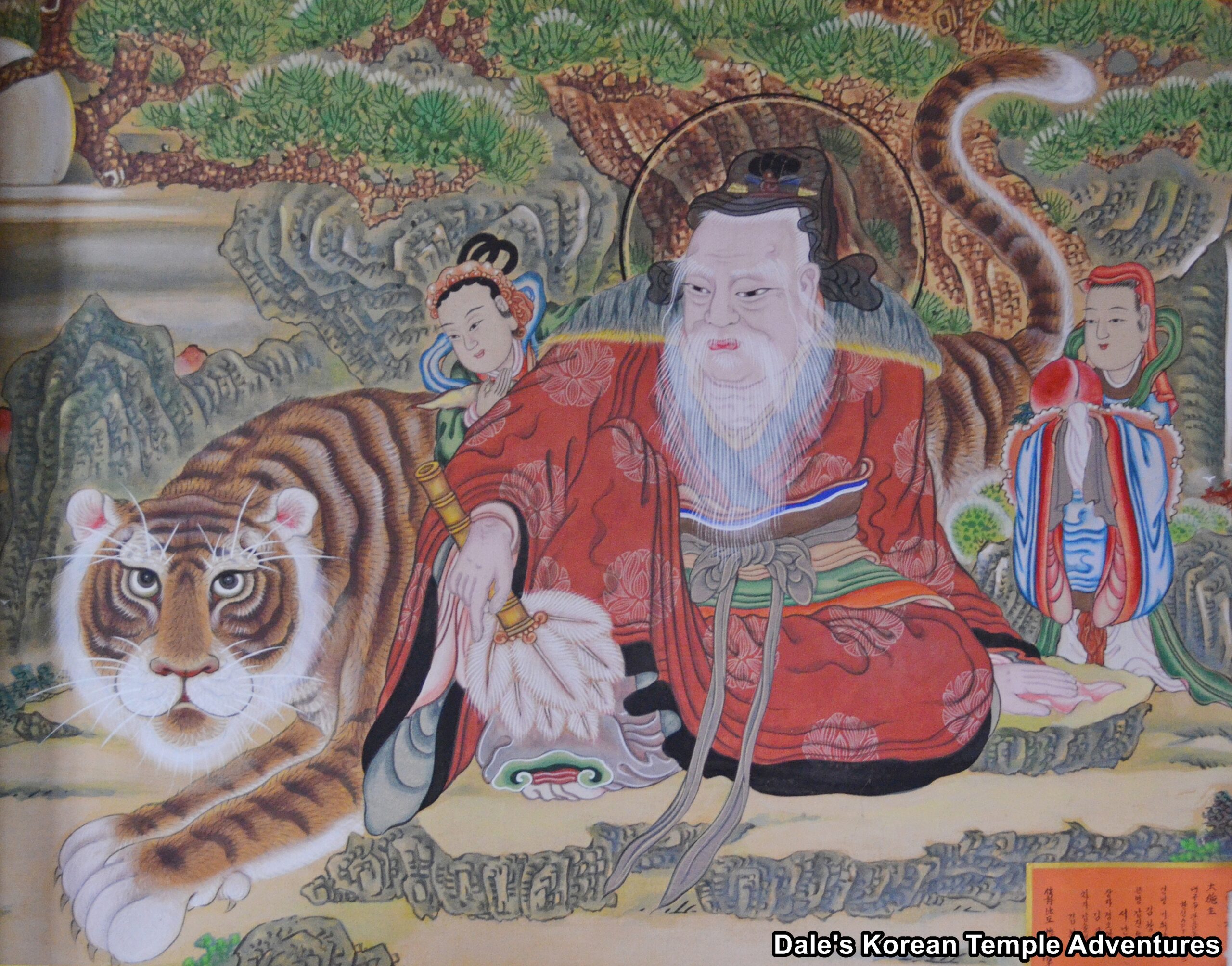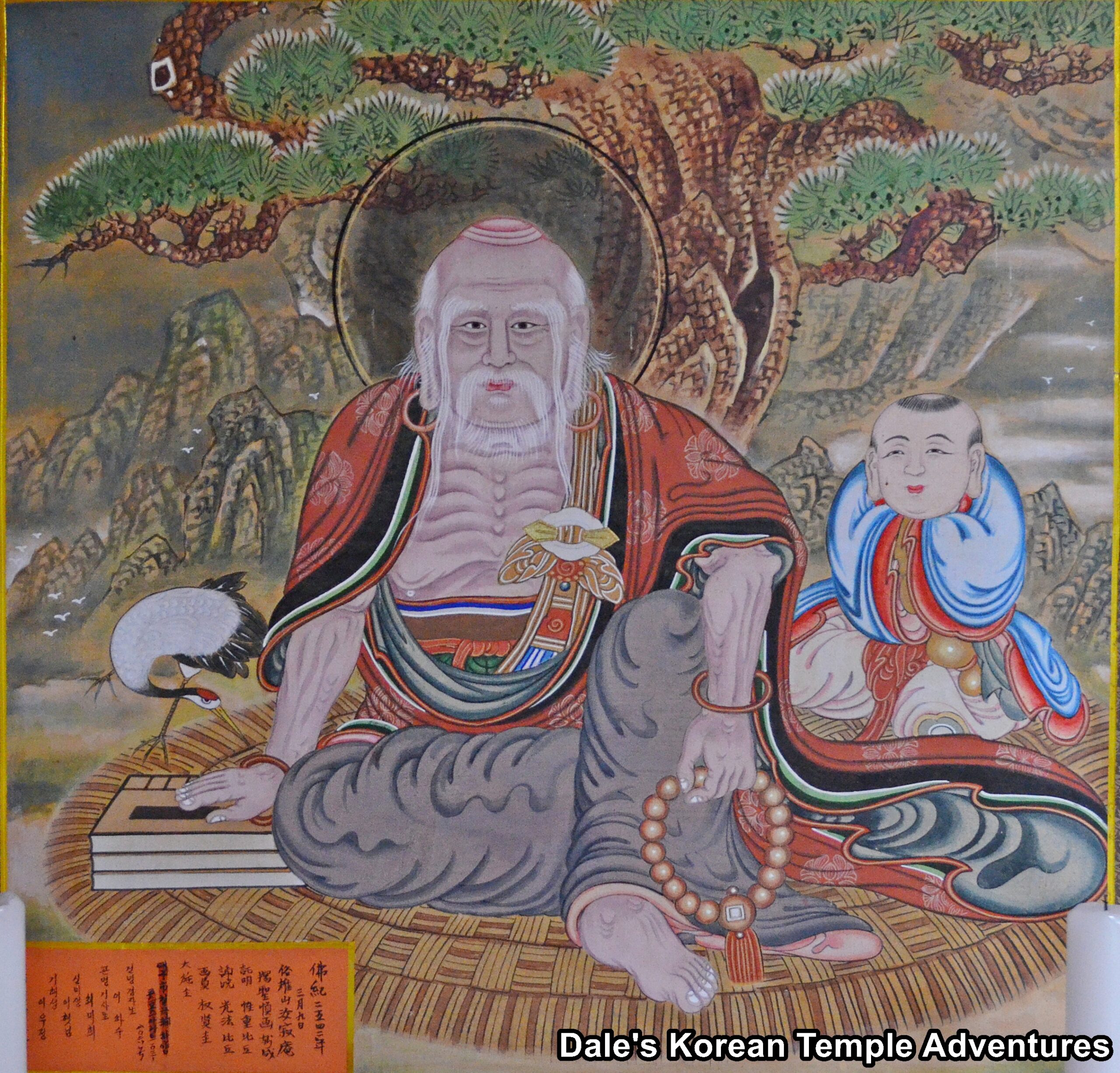Yeojeokam Hermitage – 여적암 (Boeun, Chungcheongbuk-do)
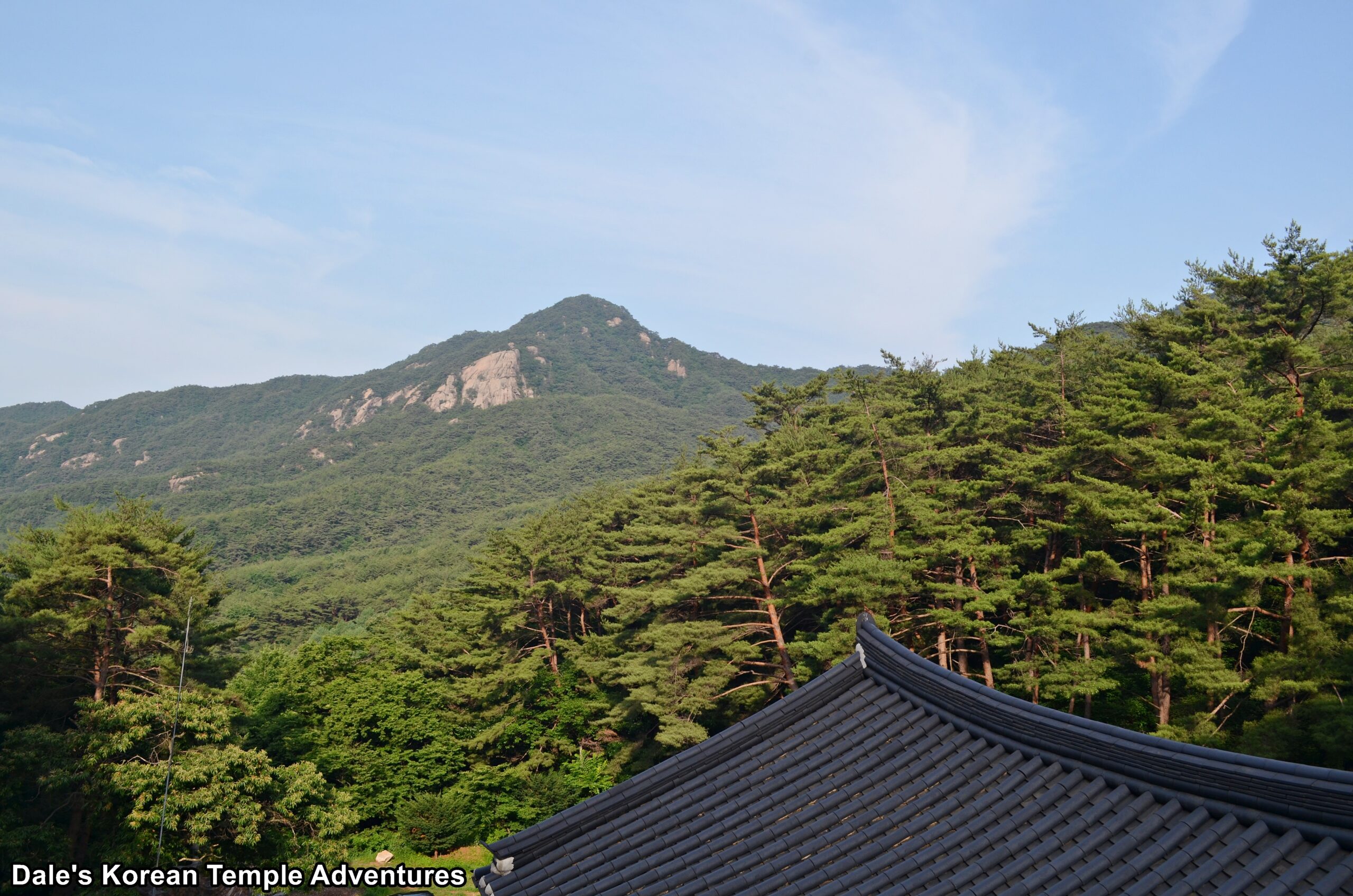
Hermitage History
Yeojeokam Hermitage is located in the southern part of Songnisan National Park in Boeun, Chungcheongbuk. The hermitage is one of 11 hermitages directly associated wtih the famed Beopjusa Temple. The hermitage was founded in 1694 by the monk Yeojeok, who was also known as Gyeongsu. However, based upon the “Multi-Story Stone Pagoda at Yeojeokam Hermitage,” which dates back to some time during either late Unified Silla (668-935 A.D.) or the Goryeo Dynasty (918-1392), the hermitage is probably much older.
There’s a rather interesting legend connected to the hermitage and the monk Yeojeok. Purportedly, the hermitage was the richest on the mountain; however, the previous abbots of the hermitage were obsessed with material gain, so they didn’t help others with the hermitage’s resources. Yeojeok, who was just a novice monk at this time, made nine rice balls. Yeojeok and the abbot of the hermitage travelled to Sujeong-bong Peak. There, the two sat in front of a rock and called out the names of the previous abbots of Yeojeokam Hermitage. One by one, Yeojeok would throw a rice ball and a big snake would come out from one of the cracks of the large stone and eat the rice ball. Then the snake returned to its hole. Yeojeok did this until he got to the seventh snake. This snake was the former abbot of the hermitage. The present abbot noticed his former master and was surprised to see his teacher re-born as a snake. Seeing this surprise, Yeojeok said to the abbot that his teacher became a snake becaue he was greedy. And even after he had died, he couldn’t forget the hermitage’s wealth, so he lived in Sujeong-bong Peak to be near Yeojeokam Hermitage. Still seeing that there was one more unoccupied hole remaining in the side of the large rock, the abbot asked Yeojeok who that hole belonged to. Yeojeok answered that the hole belonged to the current abbot. After that, the abbot of Yeojeokam Hermitage held a meeting, where he distributed the wealth of the hermitage to those in need. And it was after this that the hermitage came to be known as Yeojeokam Hermitage.
More recently, the monk Nameungik-daesa rebuilt the hermitage between 1901 to 1907. Unfortunately, the hermitage was destroyed during the Korean War (1950-53). Yeojeokam Hermitage was rebuilt, once more, in 1964 by the monk Haengdam. And over the past ten years, Yeojeokam Hermitage continues to be rebuilt and expand.
The hermitage is home to just one designated property. The designated property, which is Chungcheongbuk-do Tangible Property #297, is the aforementioned “Multi-Story Stone Pagoda at Yeojeokam Hermitage.”
Hermitage Layout
You first make your way up to Yeojeokam Hermitage up a long and winding road, until you come to the hermitage parking lot. Climbing your way towards the upper courtyard, you’ll pass by the administrative office and facilities at Yeojeokam Hermitage to your left on the lower courtyard.
Continuing onwards, and upwards, you’ll finally come to the upper courtyard at Yeojeokam Hermitage. To the far left is the Yosachae (monks’ dorms). Next to it is the newly built Daeung-jeon Hall. This main hall is less than ten years old, and its exterior walls are beautifully adorned with murals dedicated to the Nahan (The Historical Disciples of the Buddha). Stepping inside the Daeung-jeon Hall, you’ll find a simplistic interior. Resting under a golden datjib (canopy) is a triad of statues centred by Seokgamoni-bul (The Historical Buddha). This central statue is about one hundred years old, and it’s joined on either side by newer statues dedicated to Gwanseeum-bosal (The Bodhisattva of Compassion) and Jijang-bosal (The Bodhisattva of the Afterlife). To the left of the main altar is a separate shrine dedicated to Jijang-bosal. And on the far right wall is a hundred year old Shinjung Taenghwa (Guardian Mural).
Out in front of the Daeung-jeon Hall is the “Multi-Story Stone Pagoda at Yeojeokam Hermitage.” Currently, there are only seven stories left to this unique pagoda, but there was probably more stories when it was first constructed. The pagoda consists of seven black tiles for its body, and it was formerly two metres in height. In total, there are only ten pagodas like this style that still remain in Korea. Perhaps the most well-known is the Hexagonal Multi-Story Stone Pagoda of Geumsansa Temple. The “Multi-Story Stone Pagoda at Yeojeokam Hermitage” is thought to date back to late Unified Silla (668-935 A.D.) or the early part of the Goryeo Dynasty (918-1392).
To the left rear of the Daeung-jeon Hall, on the other hand, and over a dry creek bed and some pretty janky stone stairs, is the hermitage’s Samseong-gak Hall. Like the Daeung-jeon Hall, this shaman shrine hall is newly built, but not as recent as the main hall. Inside the Samseong-gak Hall are three beautiful, modern paintings dedicated to Chilseong (The Seven Stars), Sanshin (The Mountain Spirit), and Dokseong (The Lonely Saint). All are beautiful in composition and rich in colour.
How To Get There
To get to Yeojeokam Hermitage, you’ll first need to get to the Boeun Intercity Bus Terminal. From the terminal, there’s a bus that goes directly to Mt. Songnisan. This bus runs every thirty to forty minutes throughout the day. From where the bus drops you off at the Songnisan stop, you’ll need to walk an additional 55 minutes to get to Yeojeokam Hermitage. Head northeast past the Songnisan National Park parking lot. Hang a right and keep heading in this direction past “Sujeong Elementary School – 수정초등학교.” Keep heading in this direction past all the farmer’s fields, you’ll also pass by both Bonggokam Hermitage and Beopgiam Hermitage. Cross over the Minpandong-gyo – 민판동교 Bridge, and keep heading northeast. Keep walking past the parking lot until you get to Yeojeokam Hermitage. In total, you’ll need to walk about 3.2 km for 55 minutes.
Overall Rating: 4/10
The main highlights to the hermitage are the “Multi-Story Stone Pagoda at Yeojeokam Hermitage,” the main altar statue dedicated to Seokgamoni-bul (The Historical Buddha) inside the Daeung-jeon Hall, as well as the Shinjung Taenghwa (Guardian Mural) inside the main hall. Also take a walk up to the Samseong-gak Hall to enjoy the three shaman murals housed inside this shrine hall. And if you’re up for it, there are numerous trails that wind their way throughout the Songnisan National Park starting at Yeojeokam Hermitage.
